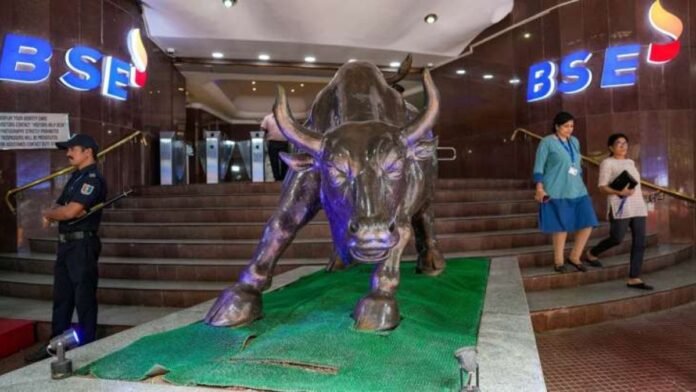The Indian stock market reached record highs on September 14, with the Sensex and Nifty indices showing mixed sentiment among investors. The market’s future is optimistic, with a strong price to earning ratio indicating a favorable market bias…
Stock Market Today: Both the Sensex and Nifty indices were close to record highs when the stock market started on September 14. The Sensex displayed a green signal at the start of the trading day, rising by 179.77 points to reach 67,646.76. Similar to the Dow, the Nifty began the day in the black after adding 66.35 points to reach 20,136.65.
The Nifty-listed firms showed a mixed mood among investors, with 22 in the rising category, 27 in losses, and 1 remaining stable.
Wipro, Adani Enterprises, M&M, Coal India, and SBI were notable gainers in the early trading session, while LTIMindtree, SBI Life, Sun Pharma, Axis Bank, and Asian Paints were among the top losses.
Profit Idea founder and managing director Varun Aggarwal, a market analyst, expressed hope for the market’s future. Strong put writing at 19,500 PE (price to earning ratio), according to Aggarwal, “indicates a favorable market bias. The ratio of small and mid-cap companies promotes bullish momentum, and the channel is still only halfway complete. It is obvious that the small-caps bull run is far from finished, and corrections are good for the market.
“The ratio is just halfway complete, thus the top end is at 0.85, and we are currently in the channel’s midpoint at 0.62. The small-caps bull run is still going strong, so it will take some time to get there. As we move forward, near-term corrections are useful for shaking off weak hands, according to Aggarwal.
Several industries, including those in the information technology, infrastructure, media, banking, and pharmaceutical industries, showed promise. Particular mid- and small-cap companies still have the ability to increase significantly from their current levels.”Stocks in IT, Infra, Media, Banks, and Pharma are looking good. Certain mid and small company equities can still increase in value from their current levels, according to Aggarwal.
A portion of the recent good stock market performance can be credited to India’s excellent 7.8% first-quarter GDP growth rate (April–June) of the fiscal year 2023–24. The ongoing overseas portfolio investments and this promising economic outlook have increased investor confidence.
Additionally, a constant eye is kept on the international markets, especially those in the US. The August inflation data release, which is expected to shed information on the US Federal Reserve’s monetary policy, has altered market emotions.
With consumer inflation forecast to reach 3.2% in July 2023, investors are interested to see if the Federal Reserve will change its stance at its September 19–20 meeting.
Market players will monitor developments and economic indicators throughout the trading day to predict market movement.The Indian stock market is still roaring at historic highs.
Conclusion
The Indian stock market began on September 14, with the Sensex and Nifty indices close to record highs. The Nifty-listed firms showed mixed sentiment among investors, with 22 in the rising category and 27 in losses. Notable gainers included Wipro, Adani Enterprises, M&M, Coal India, and SBI, while top losses included LTIMindtree, SBI Life, Sun Pharma, Axis Bank, and Asian Paints. Market analyst Varun Aggarwal expressed hope for the market’s future, citing a favorable price to earning ratio of 19,500 PE. He also noted that the small-caps bull run is still strong, and near-term corrections are beneficial for the market. Several industries, including IT, infrastructure, media, banking, and pharmaceutical, showed promise, with mid- and small-cap companies still having the potential to increase significantly. The recent good stock market performance can be attributed to India’s 7.8% first-quarter GDP growth rate and ongoing overseas portfolio investments. Market moods are also influenced by the expectation of August inflation data release, which could provide insight into the US Federal Reserve’s monetary policy actions. Market participants will monitor developments and economic indicators throughout the trading day to predict market movements.



